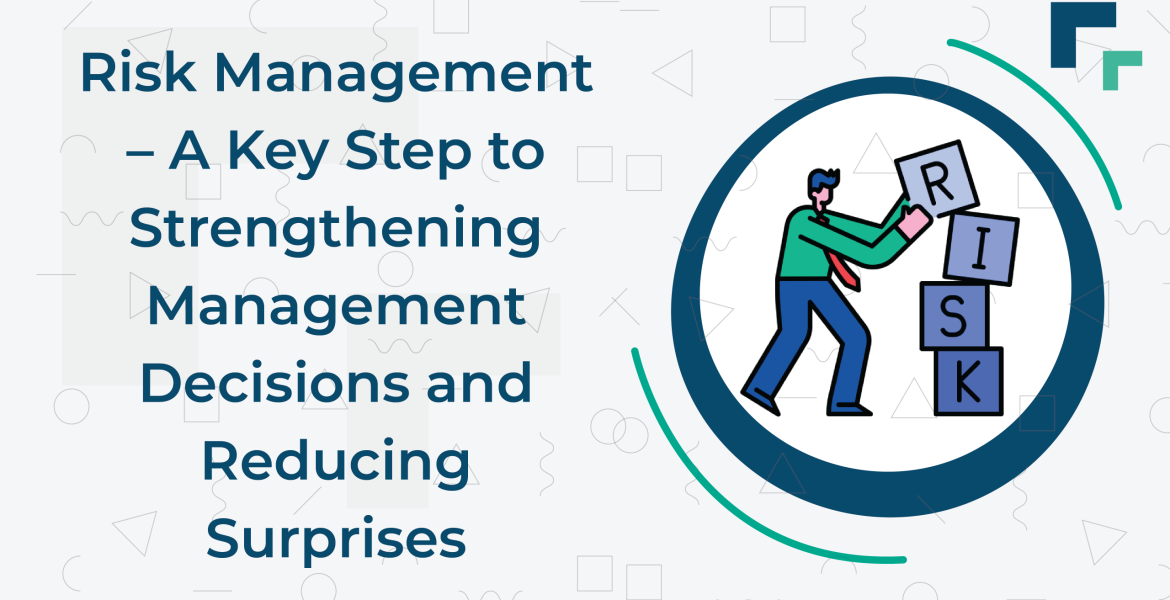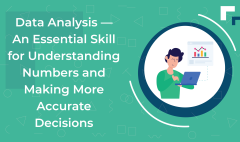Risk Management – A Key Step to Strengthening Management Decisions and Reducing Surprises

Risk Management – A Key Step to Strengthening Management Decisions and Reducing Surprises
Introduction
In today’s fast-paced business environment, success is no longer just about planning, it’s about the ability to deal with uncertainty and prepare for the unexpected.
This is where risk management emerges as one of the most important tools of modern leadership.
It doesn’t mean being afraid of challenges; rather, it means being smartly prepared and understanding potential threats before they turn into real crises.
What Is Risk Management?
Risk management is a structured process designed to identify potential problems before they occur and to develop plans for dealing with them effectively.
In simple terms, it is “the art of anticipation and preparedness.”
A company may face a financial risk, a supply chain disruption, or even the loss of a key employee all of which are examples of risks that should be anticipated in advance.
An organization with a clear risk management plan can respond quickly and intelligently when unexpected events arise.
The Importance of Risk Management
Risk management gives organizations confidence and clarity in decision-making, as every decision becomes grounded in a realistic understanding of what could happen.
Key benefits include:
- Reducing unexpected surprises through proactive preparation.
- Improving decision quality by relying on accurate data and analysis.
- Protecting financial and human resources from sudden losses.
- Enhancing organizational resilience during crises.
Organizations that ignore risk management often find themselves reacting to problems rather than preparing for them an approach that frequently leads to significant losses.
The Steps of Risk Management
Effective risk management follows a clear methodology, typically consisting of four main steps:
- Identifying potential risks:
Begin by identifying anything that could negatively affect objectives whether internal or external factors. - Assessing the likelihood and impact:
Not all risks are equally serious. Some are minor, while others may threaten the entire project. - Planning a response:
Develop a ready to implement contingency plan (Plan B) for when the risk occurs such as securing alternative suppliers or financial backup plans. - Monitoring and reviewing:
Since the business environment is constantly changing, risk plans must be updated regularly to remain effective.
Types of Risks in the Workplace
Organizations face various types of risks, including:
- Financial Risks: Market fluctuations, cost increases.
- Operational Risks: Equipment failure, quality issues.
- Human Risks: Loss of talent, poor internal communication.
- External Risks: Economic crises, regulatory changes, or cyberattacks.
A clear understanding of these categories helps management allocate resources wisely and protect the most vulnerable areas of the organization.
Risk Management as a Tool for Stronger Decisions
When managed intelligently, risks transform from threats into tools for smarter and more resilient decision-making.
For example, a company that decides to expand into a new market after a thorough analysis of political and economic risks is better positioned to move safely and strategically.
Instead of leaping into the unknown, it identifies the safest paths and makes a well-informed expansion decision.
In this way, risk management becomes a strategic partner in decision-making, not just a separate department within the organization.
Conclusion
Risk management is not merely a “reaction” but a proactive mindset that enables leaders to make more confident and stable decisions.
It is the tool that transforms uncertainty into something manageable and empowers organizations to navigate a world full of challenges.
In short, the more aware management is of risks, the more prepared it becomes for success.
Frequently Asked Questions (FAQs)
- What is the main goal of risk management in organizations?
The goal is to protect organizational objectives from potential threats by anticipating risks and preparing effective plans before they occur. - Is risk management only for large companies?
No, it applies to organizations of all sizes even small businesses need to assess risks to avoid unexpected losses. - What’s the difference between “risk management” and “crisis management”? Risk management focuses on prevention and preparedness before a problem occurs, while crisis management happens afterward to handle the consequences.
- What are the most common tools used in risk analysis?
Common tools include SWOT analysis, the probability impact matrix, and quantitative and qualitative risk assessment techniques. - How can employees be trained in risk management?
Through specialized workshops and training programs that teach how to identify and assess risks using real world examples from the work environment.


